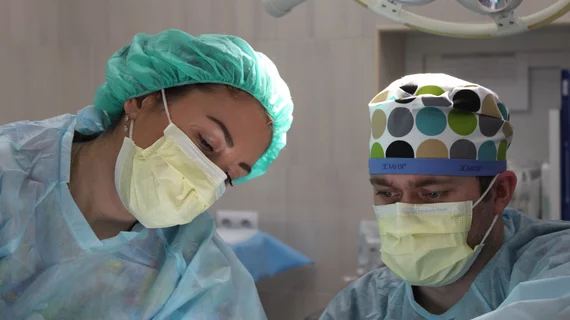How the continued rise of TAVR has impacted SAVR outcomes
Transcatheter aortic valve replacement (TAVR) is now the go-to treatment option for a majority of patients presenting with severe symptomatic aortic stenosis, leading to a considerable reduction in surgical aortic valve replacement (SAVR) volumes throughout the United States.
What does this significant shift in patient care mean for SAVR outcomes? A team of researchers aimed to find out, sharing its findings in the American Journal of Cardiology.[1]
“Considering the well-documented relation between procedural volume and outcomes, we hypothesized that these shifting trends may have affected outcomes of SAVR,” wrote lead author Samian Sulaiman, MD, a cardiology fellow at West Virginia University, and colleagues
Sulaiman et al. explored data from the National Readmissions Database on patients who underwent SAVR in 2012 and 2019. This included 47,529 patients from 2012 and 28,474 patients in 2019.
Reviewing the data, the group found that SAVR patients were younger in 2019 (72.9 years old) than 2012 (76.1 years old). SAVR patients were also less likely to be female (29.9% vs. 39.3%) in 2019 and less likely to present with hypertension or anemia. SAVR did, however, become a more common treatment for patients with peripheral vascular disease (PAD) in 2019 (29.5%) than it was in 2012 (20.8%).
In-hospital mortality was 4% in 2012 and 3% in 2019. After adjusting for certain risk factors, the team added, there was no difference at all.
“Our results must be interpreted within observational studies and administrative data limitations,” the authors wrote. “However, these data provide reassurance that the decrease in annual SAVR volume was not associated with worsening in-hospital mortality.”
Related Structural Heart Disease Content:
VIDEO: MitraClip vs. surgical mitral valve replacement
TAVR vs. surgery, FFR-guided PCI and DCB safety: Day 3 at ACC.22
Older LAAO patients, especially women, face a higher risk of complications
Same-day discharge after TAVR is feasible and safe, new Cleveland Clinic study confirms
PCI boosts survival for ischemic HF patients with moderate-to-severe mitral regurgitation
Reference:

